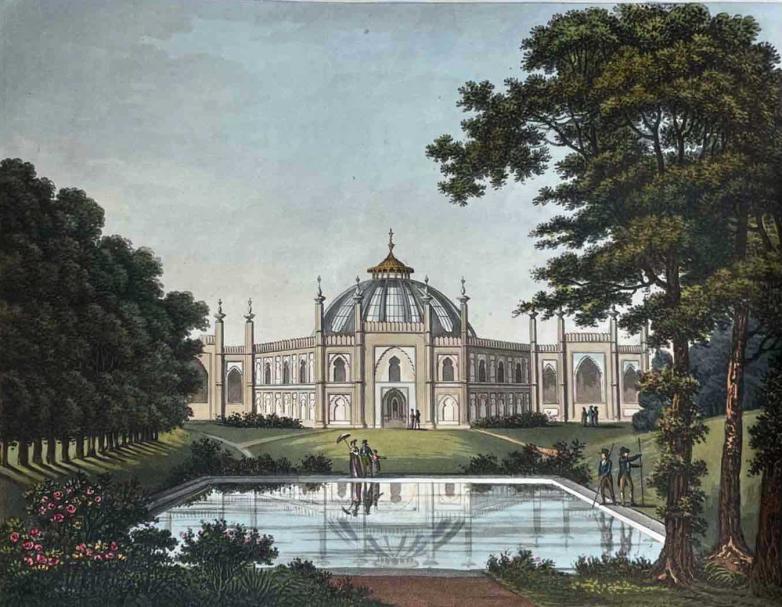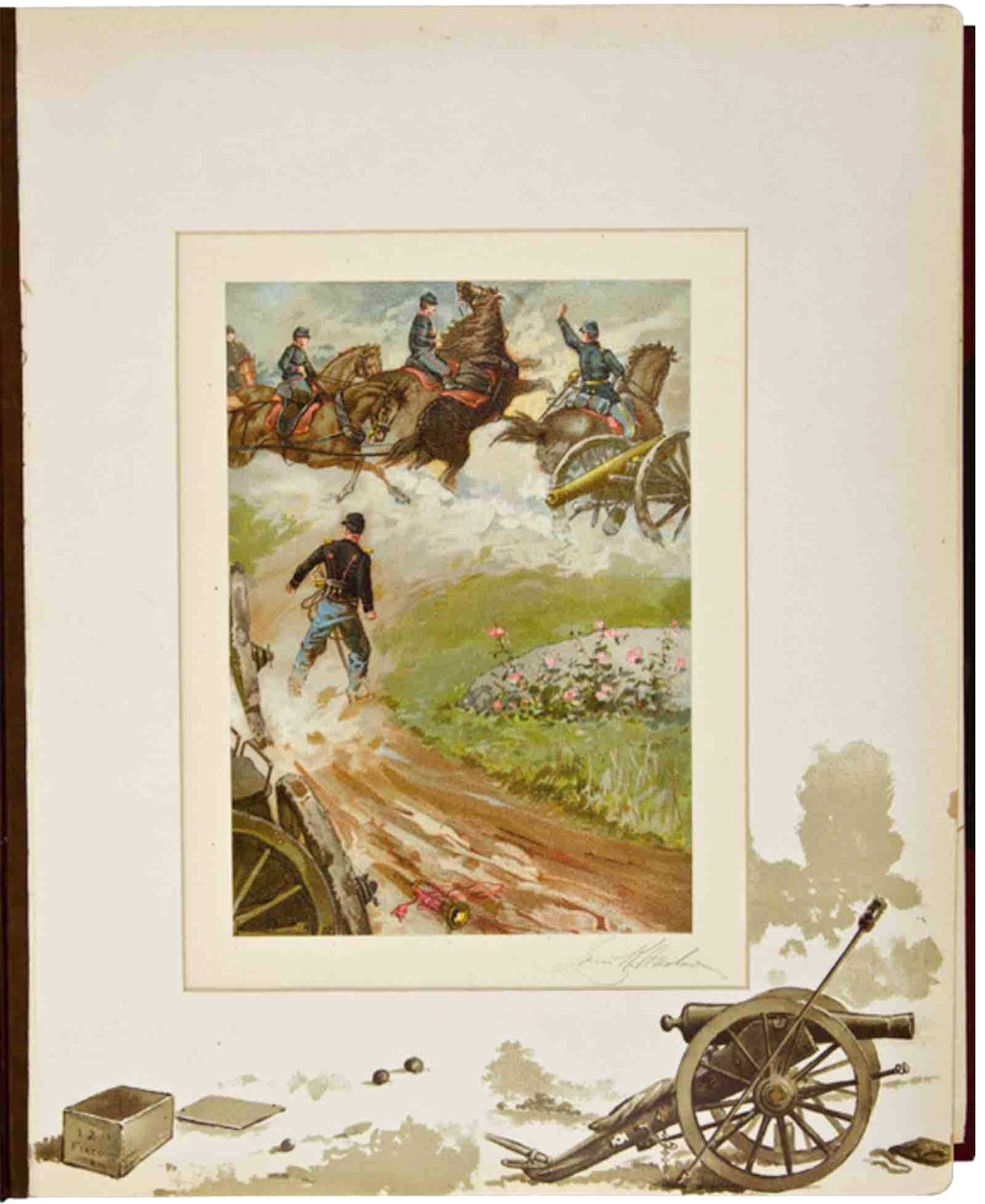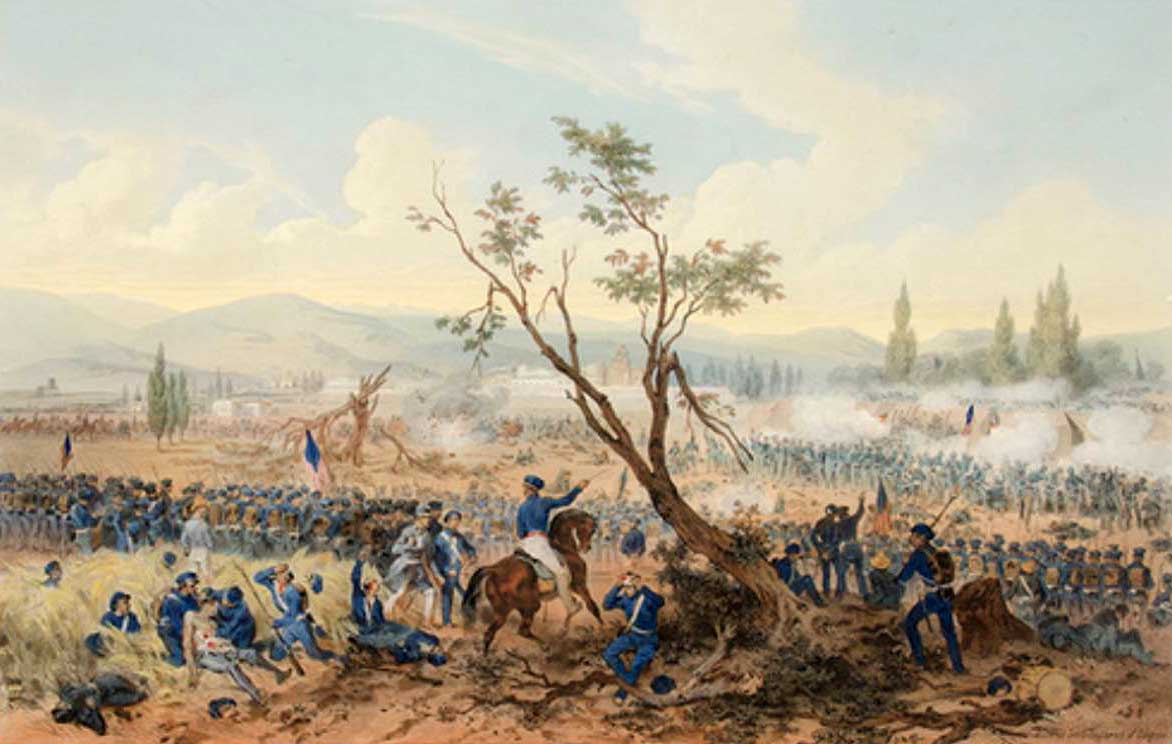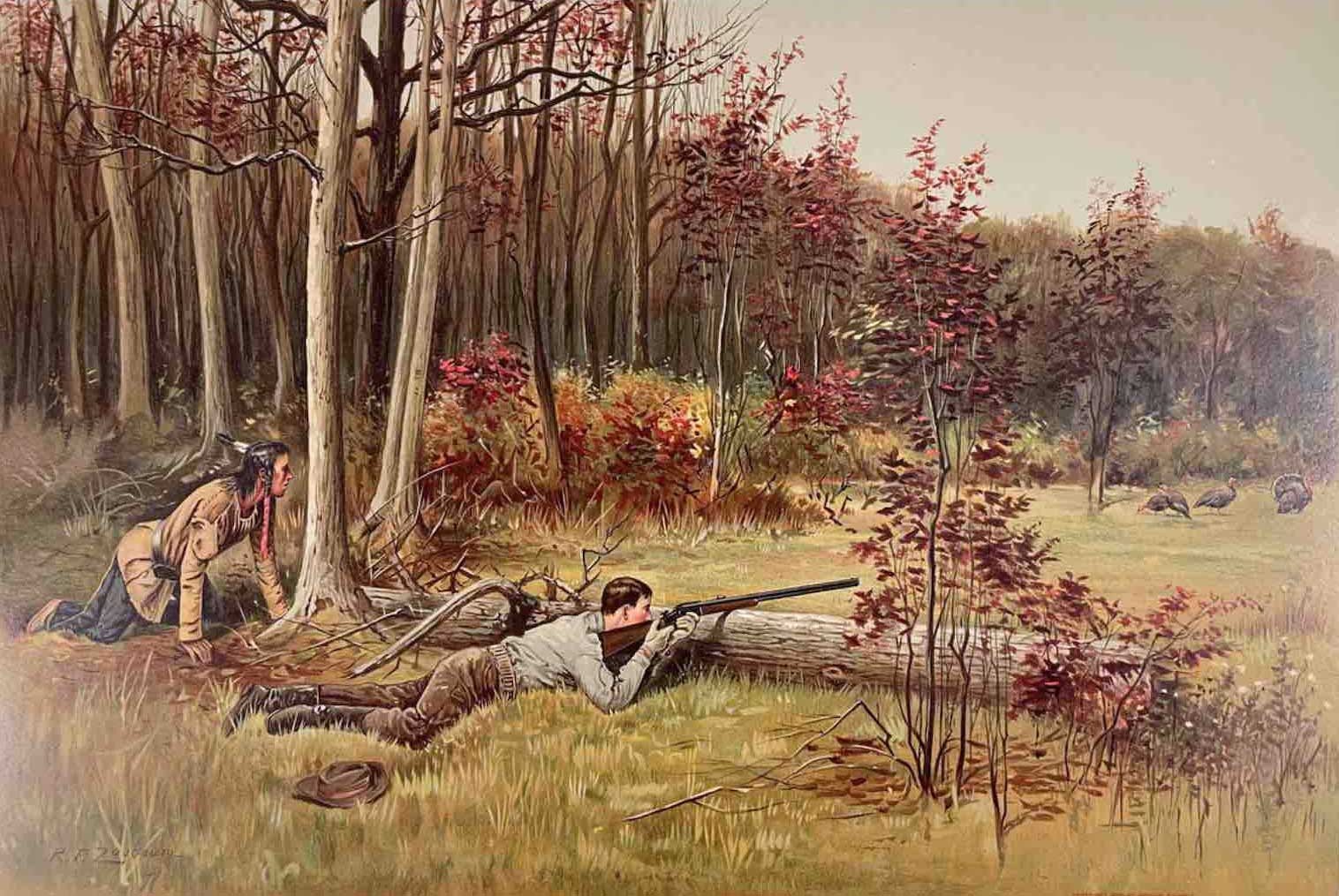* The War between the United States and Mexico illustrated, embracing pictorial drawings of all the principal conflicts with a description of each battle by George Wilkins Kendall and Carl Nebel. New York & Philadelphia: [Plon Brothers of Paris for] D. Appleton & Co. and George S. Appleton, 1851. 12 fine hand-coloured lithographic plates on card by Bayot (11) or Bayot & Bichebois (1) after Nebel.
Kendall was America's first great war correspondent and an ardent proponent of the necessity of America's war with Mexico. When hostilities broke out, he went at once to the Rio Grande where he joined with the Rangers, and later attached himself to the Scott expedition. For this work, he keyed his text to the individual plates, and the combination affords a detailed illustrated account of each battle. The plates are the work of the German artist, Carl Nebel, who painted the twelve major clashes of the war. Kendall notes in his preface: "Of the twelve illustrations accompanying his work ... the greater number were drawn on the spot by the artist.”
* A Critical Inquiry into Antient Armour, as it Existed in Europe, particularly in Great Britain, from the Norman Conquest to the reign of King Charles II by Sir Samuel Rush Meyrick and Joseph Skelton. Second edition. London: Henry G. Bohn, 1842-1854. 5 volumes. Hand-coloured lithographic frontispiece to vol. I, 80 plates (70 hand-coloured aquatints, most heightened with gilt, 10 etched uncoloured plates), 27 large hand-coloured initials, most heightened with gilt. Engraved titles and engraved frontispieces in each vol., portrait and 150 engraved plates.
An excellent set of the second and best edition of Meyrick's great work on arms and armour, this set with the supplement by Skelton on the famed Goodrich Court collection. First published in 1824, this work was one of the first to view the subject of ancient arms and armour from a historical perspective.
* Picturesque Representations of the Dress and Manner of the English by William Alexander. London: printed for John Murray by W. Bulmer & Co, 1814. 50 hand-coloured aquatint plates by William Alexander.
A fine copy of this fascinating work. This extraordinary work covers a vast range of social types from 'The Sovereign' to a chimney sweep, a judge to the licensed man that watered and fed the horses pulling the hackney carriages. The images and related text on the working classes in general and the street vendors, in particular, are probably the most interesting. They picture and describe people who do not appear in conventional histories of the period and offer a window into real life on the streets at the beginning of the 19th century.




















